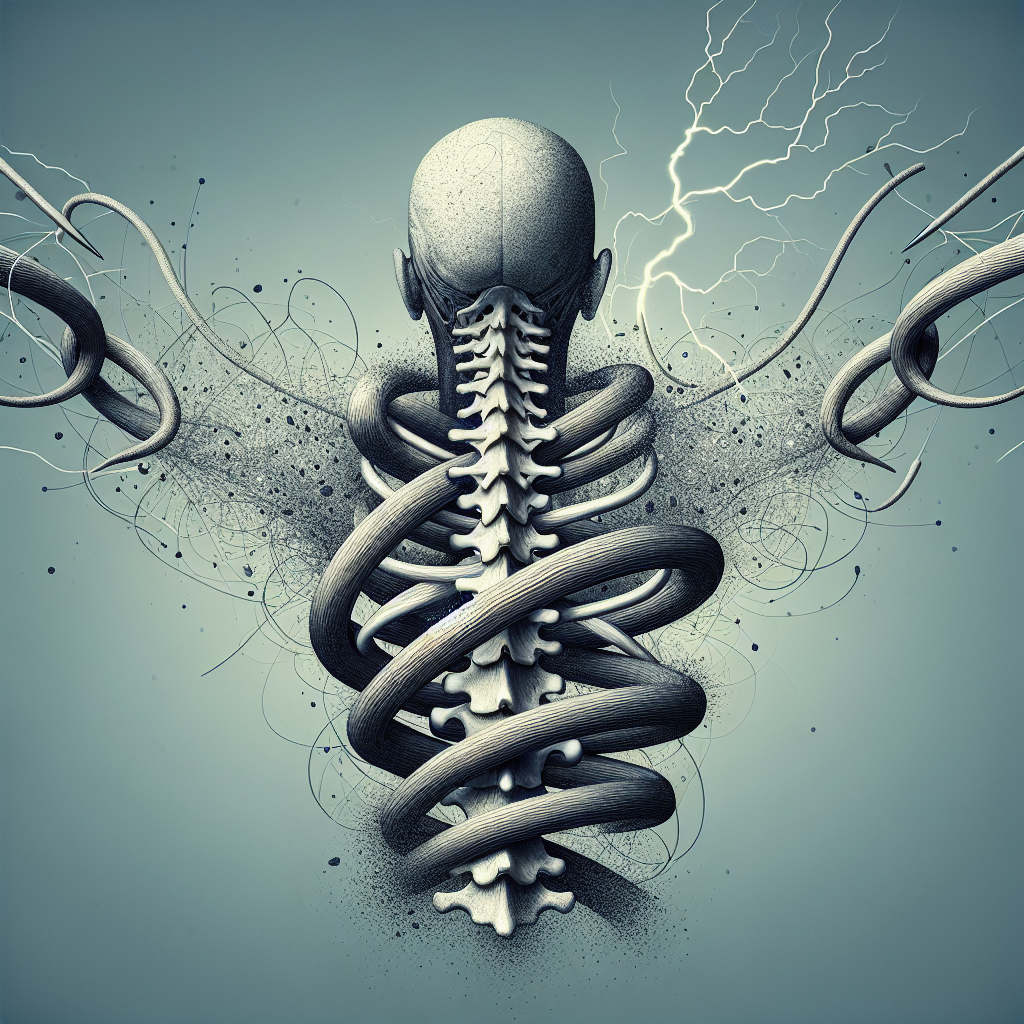
How Does Stress Affect Lower Back Pain And The Lumbar Region?
Have you ever noticed that when you’re feeling stressed, your lower back seems to ache more than usual? It may not be mere coincidence. In this article, we’ll explore the connection between stress and lower back pain, and how the lumbar region is specifically affected. Understanding this relationship can help you better manage your stress levels and find relief from persistent back pain. So, let’s take a closer look at how stress manifests in our bodies and its impact on our lower back health.

Physiological response
Stress can have a profound impact on the body’s physiological response, particularly in relation to lower back pain and the lumbar region. One of the physiological responses to stress is muscle tension. The body tends to tighten up when under stress, and this can lead to increased muscle tension in various areas, including the lower back. This heightened muscle tension can contribute to discomfort and pain in the lumbar region.
Another physiological response to stress is inflammation. When the body experiences stress, it releases certain chemicals that can trigger inflammation. Inflammation can exacerbate existing conditions, such as muscle strains or arthritis, leading to increased pain and discomfort in the lower back.
Furthermore, stress can also contribute to blood flow restriction. During stressful situations, blood vessels constrict, reducing the blood flow to certain areas of the body, including the muscles and tissues in the lumbar region. This reduced blood flow can impede the body’s ability to heal and recover from any existing injuries or conditions, prolonging lower back pain.
Psychological factors
In addition to the physiological response, psychological factors associated with stress can also impact lower back pain and the lumbar region. Emotional stress plays a significant role in how our bodies perceive pain. When you are stressed, your body’s threshold for pain may decrease, making you more sensitive to discomfort and amplifying the perception of lower back pain.
Stress can also induce behavioral changes that can contribute to or worsen lower back pain. For example, when stressed, some individuals may adopt unhealthy coping mechanisms, such as poor posture or excessive sitting. These behaviors can place additional strain on the lower back, leading to increased pain and potential long-term damage.
Impact on nerve function
Though often overlooked, stress can have a considerable impact on nerve function, which can further exacerbate lower back pain. Heightened nerve sensitivity is a common response to stress, and this can lead to increased pain perception in the lumbar region. Even mild stimuli that would typically be tolerable may be interpreted as painful when the nerves are hypersensitive due to stress.
Additionally, stress can alter nerve signaling, impacting the body’s ability to coordinate movements and maintain proper muscle function. When nerve signaling is impaired, it can lead to muscle imbalances and spasms, which can contribute to lower back pain and discomfort.
Effects on muscle health
Muscles play a crucial role in supporting the lower back and maintaining its stability. However, stress can have detrimental effects on muscle health, further contributing to lower back pain. Muscle imbalances and spasms are common consequences of stress, as the body’s response to stress can disrupt the normal balance of muscle activation and relaxation.
Reduced muscle strength and flexibility are also potential outcomes of prolonged or chronic stress. When stressed, the body may prioritize other physiological responses over maintaining muscle health, leading to muscle weakness and limited flexibility in the lumbar region. This lack of strength and flexibility can make the lower back more susceptible to injuries and increase the likelihood of experiencing lower back pain.

Impact on spinal structures
Stress can also affect the alignment and health of the spinal structures, which play a vital role in the stability and function of the lower back. Changes in spinal alignment are common in individuals experiencing high levels of stress. This misalignment can put undue pressure on certain areas of the spine, including the lumbar region, leading to pain and discomfort.
Furthermore, stress can contribute to intervertebral disc degeneration. Intervertebral discs act as shock absorbers between the vertebrae, but stress can cause these discs to deteriorate more rapidly, reducing their ability to cushion and protect the spine. This deterioration can result in increased friction between the vertebrae, leading to further lower back pain.
Additionally, stress can also contribute to the compression of nerves and blood vessels in the lumbar region. As stress leads to muscle tension and inflammation, the surrounding tissues may exert pressure on the nerves and blood vessels, leading to pain, numbness, and restricted blood flow to the lower back.
Stress-related lifestyle factors
Stress can influence various lifestyle factors that directly or indirectly impact lower back pain and the health of the lumbar region. Posture and ergonomics, for example, can be significantly affected by stress. When stressed, individuals may adopt slouched or hunched positions, placing strain on the lower back and increasing the risk of developing or worsening lower back pain.
Sedentary behavior, often associated with stress, can also contribute to lower back pain. When stressed, individuals may be more inclined to engage in prolonged periods of sitting or inactivity, which can weaken the core muscles responsible for supporting the lower back. Weak core muscles can lead to poor spinal stability and increased susceptibility to lower back injuries and pain.
Sleep disturbances are another common consequence of stress. Poor quality or inadequate sleep can impact the body’s ability to heal and recover from any existing injuries or conditions, including lower back pain. Furthermore, stress can contribute to muscle tension, making it more challenging to achieve restful sleep, perpetuating a cycle of pain and sleep disturbances.
Lastly, stress can influence diet and nutrition choices. When stressed, some individuals may turn to unhealthy eating habits or comfort foods, which can lead to inflammation and weight gain. Increased inflammation can aggravate lower back pain, while excess weight places additional stress on the lumbar region, further contributing to discomfort and pain.

Stress management techniques
Given the significant impact of stress on lower back pain and the lumbar region, it is essential to incorporate effective stress management techniques into your daily routine. Physical activity and exercise are highly beneficial for stress reduction and lower back pain management. Engaging in regular exercise helps release endorphins, natural pain-relieving chemicals, and promotes muscle strength and flexibility, reducing the risk of lower back injuries.
Relaxation techniques, such as deep breathing exercises, meditation, or yoga, can help minimize the physiological and psychological effects of stress. These practices can induce a state of relaxation, release muscle tension, and promote overall well-being, reducing the intensity and frequency of lower back pain.
Cognitive-behavioral therapy (CBT) is another effective stress management technique that can help individuals identify and reframe negative thoughts and behaviors associated with stress. By addressing maladaptive coping mechanisms, CBT can help individuals develop healthier strategies for managing stress, ultimately reducing the impact of stress on lower back pain.
Implementing stress reduction strategies into your daily routine is also important. This can include incorporating breaks and relaxation periods, setting boundaries, and practicing effective time management. Identifying and addressing the root causes of stress can significantly reduce its impact on lower back pain and promote better overall health.
Role of cortisol
Cortisol, commonly referred to as the stress hormone, plays a significant role in the body’s response to stress and can have implications for lower back pain and the lumbar region. Cortisol has been known to impact inflammation levels in the body, and stress can cause cortisol levels to rise. Elevated cortisol levels can contribute to increased inflammation, further worsening lower back pain.
In addition to its effect on inflammation, cortisol can also impact muscle tissue. Prolonged or chronic stress can lead to the breakdown of muscle proteins and impair muscle regeneration and repair processes. This can contribute to muscle weakness, imbalances, and reduced overall muscle health in the lumbar region, increasing the risk of experiencing lower back pain.
Moreover, cortisol can influence pain perception. Studies have shown that elevated cortisol levels can lower pain thresholds, making an individual more sensitive to pain. As a result, even minor or usual sensations in the lower back can be perceived as more painful and uncomfortable when cortisol levels are elevated.

Synergistic relationship with existing conditions
Stress can have a synergistic relationship with existing conditions, exacerbating lower back pain and negatively impacting the lumbar region. Stress-induced exacerbation of chronic pain is a common occurrence. When experiencing stress, individuals with pre-existing chronic pain conditions, such as fibromyalgia or arthritis, may experience heightened pain levels and increased discomfort in the lower back.
Stress can also interact with musculoskeletal disorders, such as herniated discs or spinal stenosis. The physiological and psychological effects of stress can exacerbate the symptoms associated with these conditions, intensifying lower back pain and limiting mobility.
Additionally, stress can contribute to the progression of spinal degeneration. The increased muscle tension, inflammation, and disruption of spinal alignment associated with stress can accelerate the degenerative processes in the spine. This can lead to the worsening of conditions such as degenerative disc disease or osteoarthritis, resulting in increased lower back pain and reduced functionality.
Conclusion
In conclusion, stress can have a significant impact on lower back pain and the lumbar region. Physiological responses such as muscle tension, inflammation, and blood flow restriction can contribute to the development and exacerbation of lower back pain. Psychological factors associated with stress, including emotional stress and stress-induced behavioral changes, can amplify the perception of pain in the lumbar region.
Furthermore, stress can influence nerve function, muscle health, spinal structures, and various lifestyle factors that contribute to lower back pain. It is crucial to incorporate effective stress management techniques into daily routines, such as physical activity, relaxation techniques, cognitive-behavioral therapy, and stress reduction strategies. Understanding the role of cortisol and its impact on inflammation, muscle tissue, and pain perception can further guide stress management efforts.
Lastly, stress can interact with existing conditions, exacerbating lower back pain and contributing to spinal degeneration. It is essential to address stress as part of a holistic approach to lower back pain management, incorporating both physical and psychological interventions to promote overall well-being and improve quality of life.







